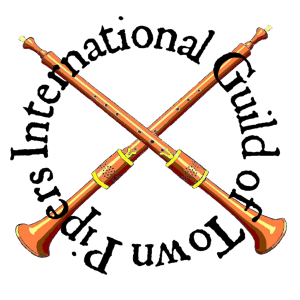Waites in London
27th November 2012
“Popular Music of the Olden Time”, vols 1 and 2, William Chappell, Dover Publications Inc., New York, 1965. p249.
Read online at: www.archive.org
“In London, each ward of the city had its musicians ; there was also the Finsbury Music, the Southwark and the Blackfriars Music, as well as the Waits of London and Westminster. Morley thus alludes to the Waits, in the dedication of his Consort Lessons to the Lord Mayor and Aldermen: ‘As the ancient custom of this most honourable and renowned city hath been ever to retain and maintain excellent and expert musicians to adorn your honours’ favours, feasts, and solemn meetings : to those, your Lordships’ Wayts, I recommend the same.’”
Chappel may be hinting that all London Wards supported their own Waits, although Alan Radford warns that Chappell does not refer to any evidence he may have found.
The 24 or 26 historic wards were:
Aldersgate
Aldgate
Basinghall
Billingsgate
Bishopsgate
Bread Street
Bridge (later split into B Within and B Without)
Broad Street
Candlewick Street
Castle Baynard
Cheap
Coleman Street
Cordwainer Street
Cornhill
Cripplegate
Dowgate
Farringdon (later split into F Within and F Without)
Langbourn
Lime Street
Portsoken
Queenhithe
Tower Street
Vintry
Walbrook
If each Ward did indeed support Waits we may have previously overlooked 24 – 26 historic bands of waits. Then of course there were waits of Westminster, Southwark, Blackfriars, Finsbury, Hackney, St. George’s, St. Pancras and Tower Hamlets, all listed on “Where Waits” but outside the historic city limits. We also know of the Waits of Blackfriars, an area in the SW corner of the City which we beleive is in Farringdon ward.
Alan Radford
Leeds Waites
23 January 2013
Bill Lyons agrees that Chappell only states that in London, each ward of the city had its musicians. Bill also says that It is worth bearing this in mind – and that we may also wish to consider what actually constitutes a ‘wait’ in this context (and how official these musicians employment was and who it was that employed them). Also in need of research is what that employment constituted: was this for regular or just occasional work and were these ‘musicians’ trained professional waits or were they functionaries within the ward whose duties extended to provision of some form of music on official ward occasions? Other considerations are location, size and demographic of each ward, how many churches, theatres, taverns, ale-houses, company halls and other public spaces were in each ward. Were the musicians in the wards waits, and if so, were they affiliated in any way to the known official bands such as the London Waits? As the Blackfriars Music encompassed the Farringdon Ward, so do the bands we know of already cover the wards anyway?
William Lyons
www.william-lyons.com
23 January 2013
There are a few good digitized versions of this book online:
1855/56 – www.imslp.org
1859 – www.archive.org
1860 – www.traditionalmusic.co.uk
It looks like H E Wooldridge expanded and revised Chappell’s original material and re-harmonized the tunes according to modes – so the harmonies were thought to be more authentic than those in the original publication. This revised edition (printed in 1893) was given a new title – “Old English Popular Music”. We are yet to examine this book to see if any additional or clearer information can be gleaned.
Al Garrod
Lincoln Waites
10 April 2022
In 1498 13s 4d was paid to the waites of London and Kingeston. This could be those we already know from Kingston-on-Hull. Waites of Kingeston appear again in 1499 with a separate entry for 3s 4d. Could this be Kingston on Thames, a not insignificant borough by the 13th century with a vital bridge over the river?
Alan Radford
Leeds Waites
